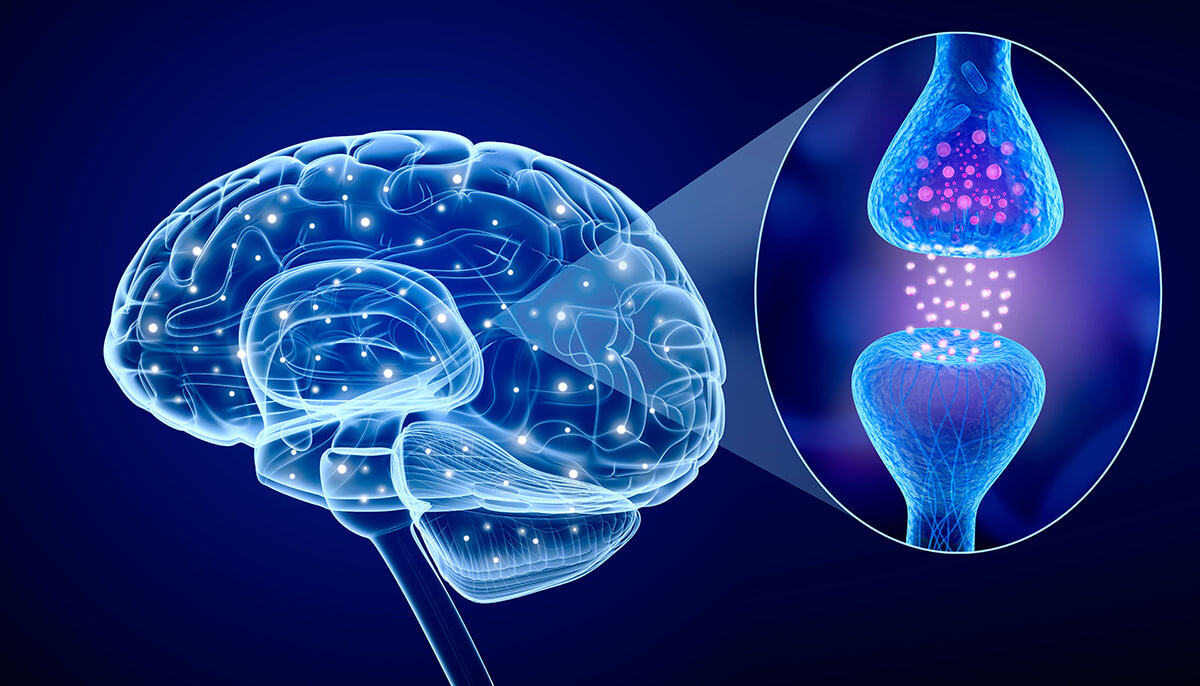
Many of us have heard of autoimmune diseases. But how many of us know exactly what it is?
These diseases are characterized by the immune system being hyperactive. This in turn leads to self-destruction and the destruction of healthy tissues, cells and organs in one's own body. Autoimmune diseases are chronic diseases and there is no cure for them. The only thing that can alleviate and slow the disease is to suppress it, through medication. Their purpose is to slow down the immune system of the patient.
One of these autoimmune diseases is multiple sclerosis or MS for short. And here comes the question again, do we know enough about this disease?
MS or multiple sclerosis is an autoimmune, inflammatory chronic disease of the central nervous system.
It is characterized by a disruption of communication between the nerve cells of the brain and spinal cord. This, in turn, leads to widespread and insidious symptomatology and, post-facto, disability.
Unfortunately, the causes and factors that lead to this disease have not yet been elucidated. The aetiology and likely genetic predisposition remain unclear. Environmental factors, infections, autoimmune disorders and viruses are thought to be key elements in its development. The latitude at which we live is also thought to have an influence on genetic susceptibility to this disease. The closer we are to the Equator, the less likely we are to get MS.
This disease most often affects people in the early years of adulthood, that is, around the 30s.
As with most autoimmune diseases, MS is a disease that is more common in the fair sex. Women of childbearing age are more susceptible to triggering various autoimmune diseases. In people in adulthood MS affects both sexes almost equally. For now, there is no known cure for MS as well as for other types of autoimmune diseases. However, there are several types of therapies that are enjoying proven success. Treatment that is administered for MS is primarily aimed at restoring function after a flare. The goal is prevention of new attacks and prevention of permanent disability.
The problem with MS is that the symptoms are similar to symptoms of many other clinical conditions.
Multiple sclerosis is among the diseases that usually take a long time to diagnose. The reason is that the most common form of multiple sclerosis is one in which symptoms appear and resolve quickly. A long period of lull follows before the next crisis.
Initial symptoms are usually transient, mild and limited. But they may be a sign of the development of multiple sclerosis. Each of them individually may signal another disease. However, their joint occurrence is a reason to see a doctor and hear his professional opinion.
The most common ones that signal the disease are:
(and again we stress - the symptoms are similar to symptoms of many other clinical conditions)
- Changes in sensitivity - Tickling, tingling and even burning on the skin may also occur. However, these symptoms may also be due to problems in the blood circulation. Therefore, you should keep an eye on how often they occur and whether you can link them to any particular causes. Apart from the sensations mentioned so far, one of the most unpleasant and painful is the feeling of pins and needles on the skin. People suffering from MS feel like being pricked by sharp objects causing them severe pain.
- Difficulty with coordination and balance. This sign is associated with clumsiness and clumsiness in the control and movement of the limbs. For example, you fail to straighten your arms and/or your legs refuse to obey the brain's commands. In addition, the gait itself becomes more stiff.
- Dizziness, vertigo and loss of balance - This symptom occurs in combination with trembling when walking. In addition, it can also be expressed in instability when standing. The sensation is similar to when a person becomes dizzy and suddenly loses balance. Do not be in a hurry to worry. First check if there are other factors that could be causing you this condition.
- Vision problems - This is one of the most obvious and pronounced symptoms. Problems such as:
– Involuntary eye movements
– Blurred vision
– Neuritis
– Double vision
– Loss of vision
– Disorder of red vision
– Pain in the eyes - Muscle weakness, stiffness and muscle cramps. Very often, each of us feels stiffness, pain and/or muscle tightness. This symptom can also be due to other diseases, such as diabetes for example. It is important to see a doctor who will appoint you the appropriate tests.
- Obstructed movement
- Pronounced weakness and fatigue. People with multiple sclerosis feel exhausted and move more slowly due to fatigue in the legs. It is important to pay attention when an active person suddenly starts complaining of weakness for no apparent reason.
- Problems with speech - People with multiple sclerosis find and say words difficult and slowly. This is very noticeable when they say words that they had no trouble pronouncing before.
- Fatigue - Fatigue is one of the most problematic symptoms of multiple sclerosis patients. Everyday routine activities that they used to manage without problems are now difficult for them.
- Problems with urination - Bladder control is a challenge for people developing multiple sclerosis.
- Tremor. Sufferers often feel sudden muscle spasms when their body starts shivering, as in a cold, even when it is warm.
- Impairment of memory, concentration and attention. Short-term memory loss is common, as are problems with concentration. Patients' abilities to analyze a particular situation gradually decrease to the point that they almost do not understand simple and ordinary things.
- Emotional instability - Multiple sclerosis patients often fall into a deep and severe depression.
Early and accurate diagnosis is very important to determine the best management and treatment algorithm for multiple sclerosis patients.
To diagnose this disease, the most commonly applied methods are:
- MRI of the brain and spinal cord
- Evoked potentials - record brain activity to different sound, sensory or auditory stimuli. (Computer equipment is used to measure the average amount of time it takes for nerve signals to travel along neural pathways.)
- Study of cerebrospinal fluid by lumbar puncture.
- Blood tests - increase in lymphocytes, total protein or elevated IgG on electrophoresis
- Electromyography and nerve conduction test
There are several forms of MS progression. Determination of the type is based on recent developments in the treatment of the disease and is used to predict its future course. This is also important for the prescription of appropriate treatment.
In 1996, the US National Multiple Sclerosis Society standardized four forms of the disease:
- Step-remitent. It is characterized by relapses that cannot be predicted. Followed by relatively quiet periods of a few months and even years of remission. Symptoms that appeared during the crisis may subside or leave lasting consequences. The second case becomes more frequent as the disease progresses. The relapsing-remitting form is the initial and most common form of the disease in 80% patients.;
- Secondary progressive - also called galloping, develops in about 65% of patients with the relapsing-remitting form. It is characterized by a gradual deterioration of the neurological status, with no clearly distinguishable periods of remission. On average, the period between the onset of the disease under the relapsing-remitting form and reaching the secondary progressive form is 19 years.
- Primarily progressive. It occurs in approximately 10 - 15% of individuals. Characterized by the absence of remissions after the initial symptoms of MS. Typical of this form is the gradual increase in symptoms from the onset of the disease, the absence or presence of sporadic and very weak remissions and improvement of the condition. The age of onset of the primary progressive form is higher than that of the relapsing-remitting form, but close to the average age of onset of the relapsing-remitting form in the secondary progressive form. In both cases, this occurs at around 40 years of age.
- Incremental-Progressive. This is the least common form of multiple sclerosis and is characterized by progressive worsening of the clinical picture, but also the presence of relapses.
For the first time in 2009, World Multiple Sclerosis Day was initiated by the International Multiple Sclerosis Federation and its regional MS societies by country.
Since then, every year this day is celebrated on the last Wednesday of May. World MS Day was created to promote the issues surrounding multiple sclerosis, the role of MS societies and the global MS movement.
In conclusion, we can say that unfortunately, there is still no cure for MS. Long-term remission is nevertheless a fact in the majority of patients. Some of them never get further symptoms after being diagnosed with MS. Evidence of progression only appears on new magnetic resonance imaging (MRI).
The good news is that today there are more options for slowing the process of multiple sclerosis than ever before.
They even include the possibility of stem cell transplantation and other cutting-edge technologies. One day, they may prove to be a real cure for the disease. In less than 20 years, MS has gone from an incurable disease to one for which there are now a dozen drugs to slow its progression and, as well as a host of other therapies to relieve symptoms.
And although there is no way to prevent MS, neurologists recommend that we expose ourselves to the sun in the morning to meet our body's vitamin D needs, as many sufferers are found to be deficient in this particular vitamin.
For more information, we at Medical Karaj are at your service.
Call us on the following numbers "Medical Karaj": 0879 977 401 or 0879 977 402.




